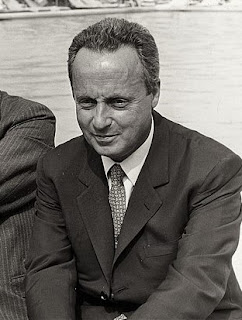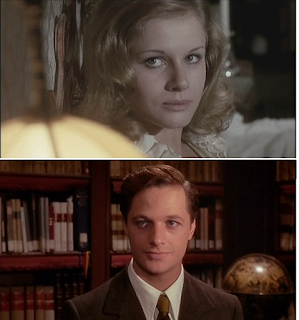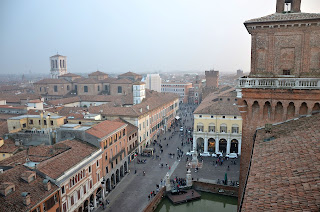Giovanni Battista Bugatti - executioner
‘Mastro Titta’ ended 516 lives in long career
Giovanni Battista Bugatti, who served as the official executioner for the Papal States from 1796 to 1864, was born on this day in 1779 in Senigallia, a port town on the Adriatic coast about 30km (19 miles) northwest of the city of Ancona. Bugatti, who became known by the nickname Mastro Titta - a corruption of the Italian maestro di giustizia - master of justice - in Roman dialect, carried out 516 executions in his 68-year career. He was the longest-serving executioner in the history of the Papal States. The circumstances of him being granted such an important role in Roman life at the age of just 17 are not known. What is documented is that while not carrying out his grim official duties he kept a shop selling painted umbrellas and other souvenirs next to his home in the Borgo district, in Vicolo del Campanile, a short distance from Castel Sant’Angelo, which served as a prison during the time of the Papal States. It seemed an incongruous day job for someone whose very name struck a chill among Rome’s criminal fraternity. Yet he treated his responsibilities with the utmost solemnity, leaving his home early in the morning on the days an execution was to take place, dressed in his scarlet executioner’s coat. Read more…
________________________________________
Augusto Odone – medical pioneer
Father who invented ‘Lorenzo’s Oil’ for sick son
Augusto Odone, the father who invented a medicine to treat his incurably ill son despite having no medical training, was born on this day in 1933 in Rome. Odone’s son, Lorenzo, was diagnosed with the rare metabolic condition ALD (Adrenoleukodystrophy) at the age of six. Augusto and his American-born wife, Michaela, were told that little could be done and that Lorenzo would suffer from increasing paralysis and probably die within two years. Refusing simply to do nothing, the Odones, who lived in Washington, where Augusto was an economist working for the World Bank, threw themselves into discovering everything that was known about the condition and the biochemistry of the nervous system, contacting every doctor, biologist and researcher they could find who had researched the condition and assembled them for a symposium. Drawing on this pooled knowledge, and with the help of Hugo Moser, a Swiss-born professor of neurology at Johns Hopkins University in Baltimore, they eventually came up with the idea of combining extracts of olive oil and rapeseed oil in a medicine that would break down the long-chain fatty acids in the human body that were considered a major cause of the nerve damage suffered by people with ALD. Read more…
_______________________________________
La traviata - the world's favourite opera
Verdi's masterpiece performed for the first time
Giuseppe Verdi's opera, La traviata, was performed in front of a paying audience for the first time on this day in 1853. The premiere took place at Teatro La Fenice, the opera house in Venice with which Verdi had a long relationship, one that saw him establish his fame as a composer. La traviata would ultimately cement his reputation as a master of opera after the success of Rigoletto and Il trovatore. La traviata has become the world's favourite opera, inasmuch as no work has been performed more often, yet the reception for the opening performance was mixed, to say the least. Reportedly there was applause and cheering at the end of the first act but a much changed atmosphere in the theatre in the second act, during which some members of the audience jeered. Their displeasure was said to be aimed in part at the two male principals, the baritone Felice Varesi and the tenor Lodovico Graziani, neither of whom was at his best. There was also criticism of the soprano Fanny Salvini-Donatelli, the first to be given the role of Violetta, the opera's heroine. Although an acclaimed singer, Salvini-Donatelli was 38 years old and somewhat overweight. Read more…
______________________________________
Francesco Guicciardini - writer and diplomat
Friend of Machiavelli among first to record history in context
The historian and statesman Francesco Guicciardini, best known for writing Storia d'Italia, a book that came to be regarded as a classic history of Italy, was born on this day in 1483 in Florence. Along with his contemporary Niccolò Machiavelli, Guicciardini is considered one of the major political writers of the Italian Renaissance. Guicciardini was an adviser and confidant to three popes, the governor of several central Italian states, ambassador, administrator and military captain. He had a long association with the Medici family, rulers of Florence. Storia d'Italia - originally titled 'La historia di Italia' - was notable for Guicciardini's skilful analysis of interrelating political movements in different states and his ability to set in context and with objectivity events in which sometimes he was a direct participant. Born into a prominent Florentine family who were influential in politics and long-standing supporters of the Medici, Giucciardini was educated in the classics before being sent to study law at a number of universities, including Padua, Ferrara and Pisa. He was interested in pursuing a career in the priesthood but his father, Piero, considered the church to have become decadent. Read more…
















